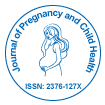Common Childhood Issues: Childhood Allergies
Received Date: Nov 01, 2024 / Accepted Date: Nov 01, 2024 / Published Date: Nov 30, 2024
Abstract
Childhood allergies are a significant health concern worldwide, affecting a growing number of children across various regions. These allergies can manifest in various forms, including food allergies, environmental allergies (such as pollen or dust mites), and skin reactions like eczema or hives. Symptoms may range from mild to severe, with some reactions leading to life-threatening conditions like anaphylaxis. The prevalence of allergies in children has been increasing, partly due to changes in environmental factors, genetics, and the hygiene hypothesis, which suggests that reduced exposure to infections in early childhood may contribute to an overactive immune response. The identification and management of childhood allergies are crucial for ensuring the well-being of affected children. Parents and caregivers often need to navigate the complexities of avoiding allergens, managing symptoms, and ensuring proper medical treatment. Common childhood allergies include those to foods such as peanuts, tree nuts, milk, eggs, and shellfish, as well as environmental allergens like pollen, mold, and animal dander. Early diagnosis and intervention can significantly reduce the risk of severe allergic reactions and improve quality of life for affected children. Childhood allergies are becoming increasingly prevalent and are a significant concern in pediatric health. Allergies occur when the immune system reacts to harmless substances, such as pollen, dust, or certain foods, as though they are harmful pathogens. The rising incidence of childhood allergies is attributed to various factors, including genetic predisposition, environmental changes, and lifestyle alterations. Common childhood allergies include food allergies, respiratory allergies (such as asthma and hay fever), skin allergies (such as eczema), and insect sting allergies. The symptoms of these allergies can range from mild to severe, with some cases potentially leading to anaphylactic reactions. Early identification and proper management of childhood allergies are critical in reducing the risk of severe allergic reactions and improving the quality of life for children affected. In addition to medical treatments, environmental control measures and education on allergen avoidance play vital roles in managing allergies. This paper explores the types of childhood allergies, their causes, symptoms, and treatment options, while also addressing the challenges faced by families and healthcare providers in dealing with these conditions. Treatment strategies range from the use of antihistamines and corticosteroids to the administration of epinephrine in emergency situations. Recent advancements in immunotherapy, such as oral immunotherapy (OIT) for food allergies, offer hope for long-term management. Parents must also be educated about recognizing early signs of allergic reactions and carrying necessary medications like epinephrine injectors. As more research is conducted, the understanding of the mechanisms behind childhood allergies continues to evolve, providing opportunities for more effective interventions.
Citation: Anu V (2024) Common Childhood Issues: Childhood Allergies. J Preg Child Health 11: 669.
Copyright: © 2024 Anu V. This is an open-access article distributed under the terms of the Creative Commons Attribution License, which permits unrestricted use, distribution, and reproduction in any medium, provided the original author and source are credited.
Share This Article
Recommended Journals
Open Access Journals
Article Usage
- Total views: 85
- [From(publication date): 0-0 - Feb 22, 2025]
- Breakdown by view type
- HTML page views: 56
- PDF downloads: 29
